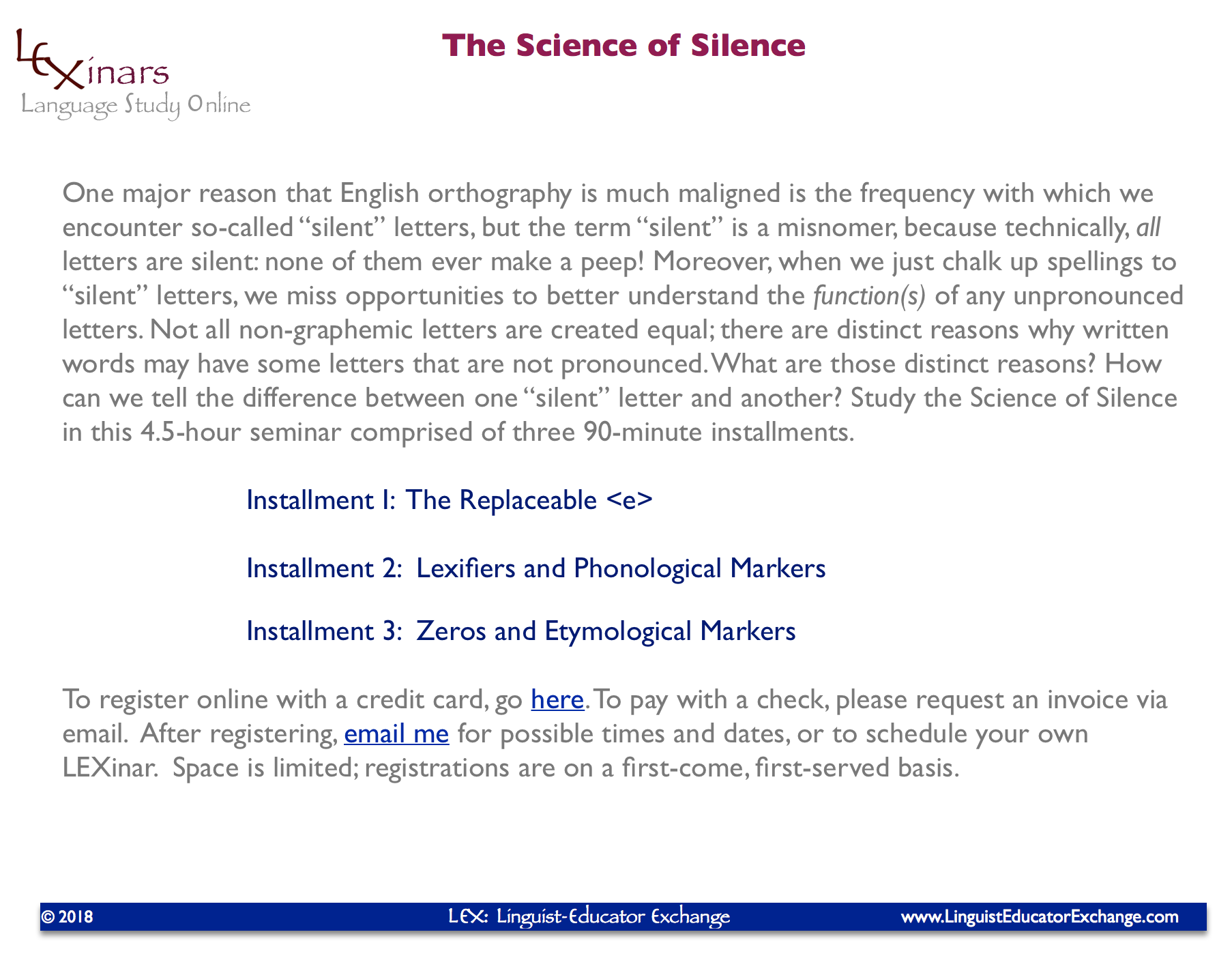The Science of Silence
A few weeks ago, one of my study partners — my youngest, a 2nd grader — was working with me on a word sum. As she spelled out the base element and got to the plus sign, she wondered aloud, “Wait, is that a replaceable <e>?” Since then, I’ve been using that fantastically simple terminology, rather than the often tortured “single, final, non-syllabic <e>” or the unhelpful and inaccurate “silent <e>.”
Another study partner and I have been discussing how a replaceable <e> is “silent” in a different way than the <b> in doubt or the <g> in sign or the <u> in circuit. Because many of the possible functions of a letter in a written word do not involve being pronounced, when we lump them all together as “silent letters,” we miss major opportunities to study and understand what’s actually happening in the written word.
I’m happy to announce the first new LEXinar of 2018, The Science of Silence, in which we will delve into, investigate, and organize the distinct structural patterns in English that can result in so-called “silent” letters. We will explore how that replaceable <e> is in a class by itself (and why!), and then put forth a basic terminology and structure for the other functions of these breadcrumbs through the forest of English orthography.
This class can stand alone, but also makes a great companion to The Zero Allophone and/or The Nature of the Grapheme. Register with a $15 discount through December 31st; full pricing starts January 1st. Download a PDF of the LEXinar Silent Letters Flyer and sign up online before December 31st!

